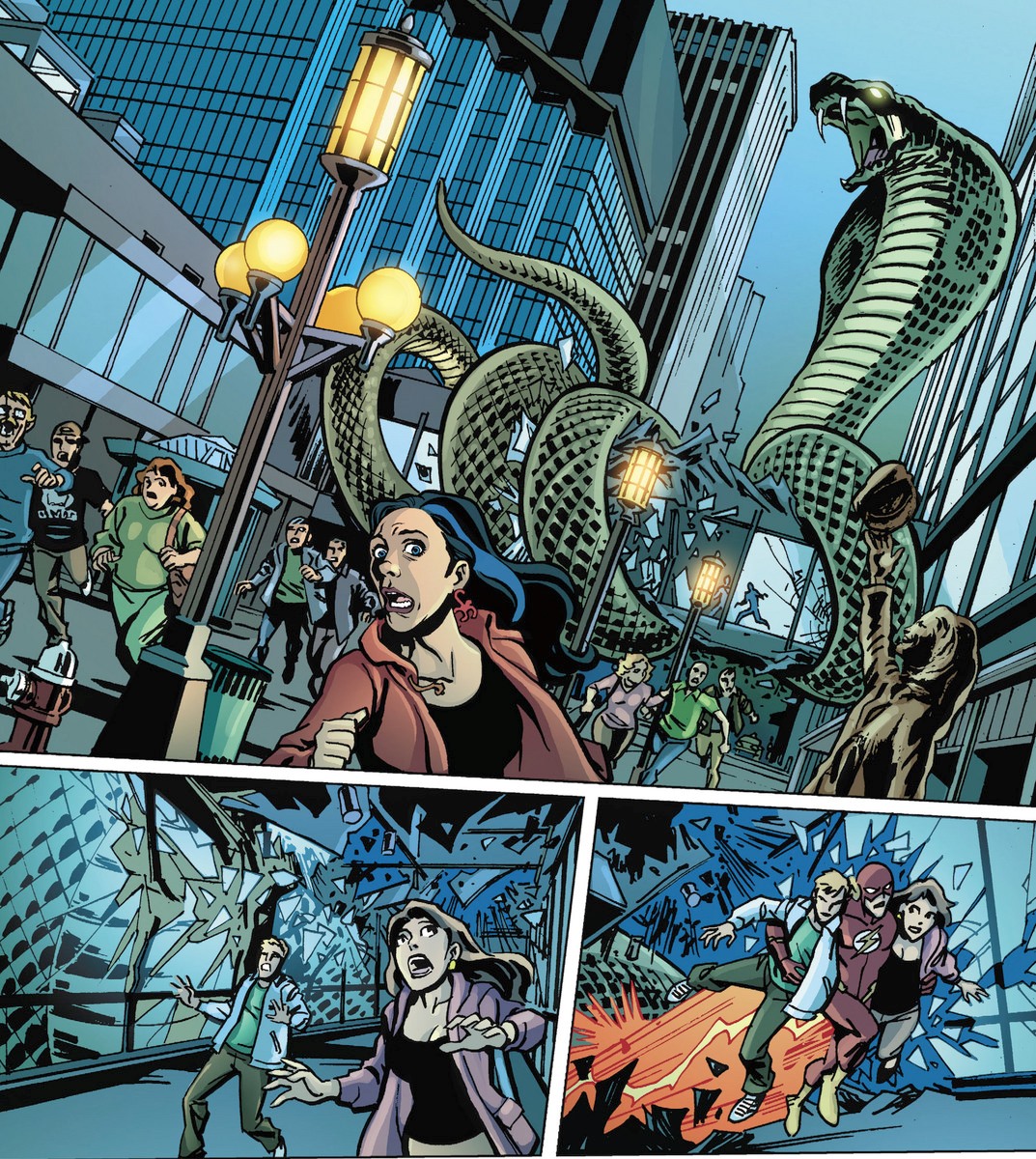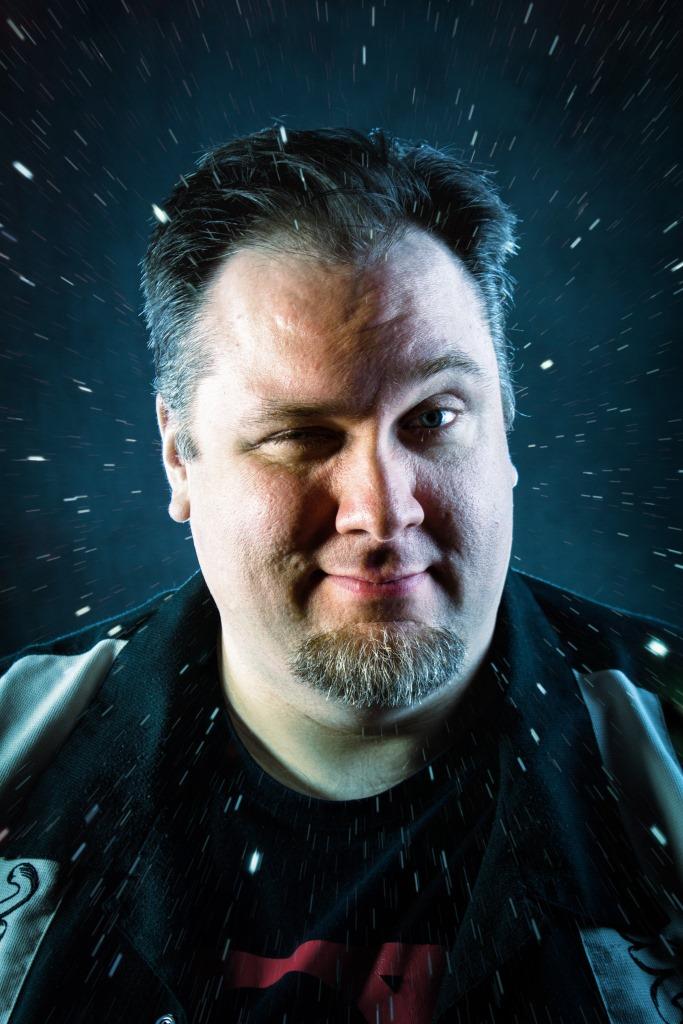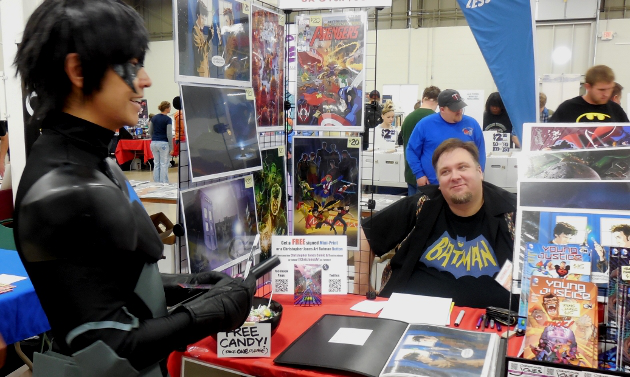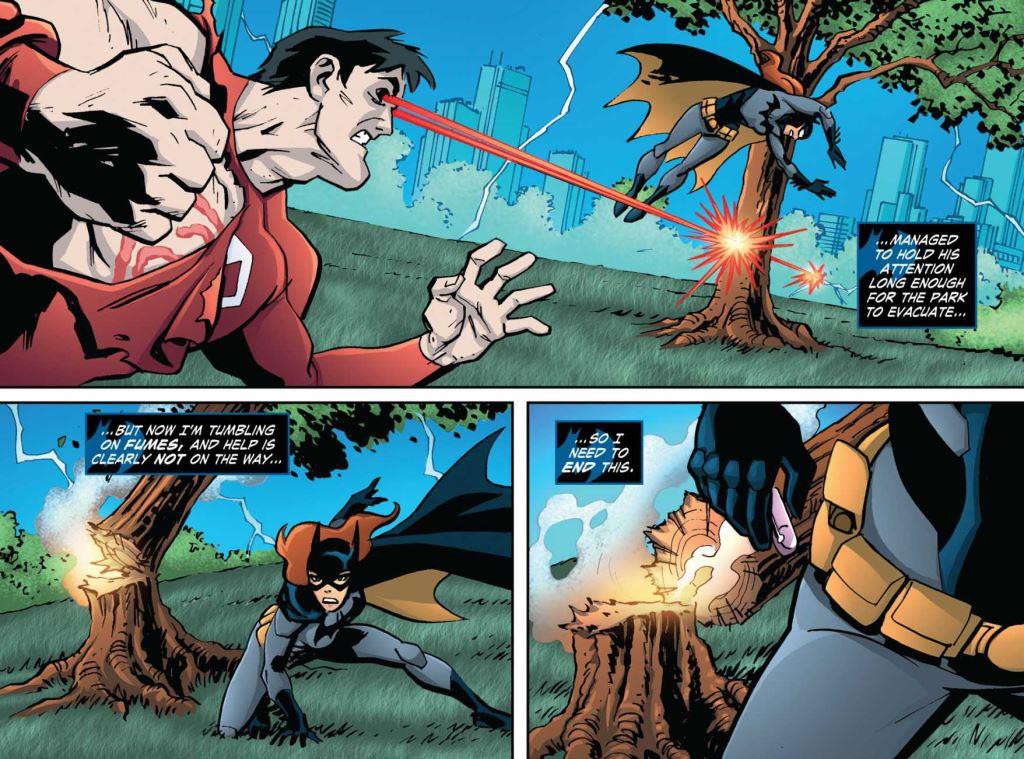Making It: Comic Book Artist Christopher Jones
Rob Callahan continues his conversations with artists about life after a big break (or two) with comic book artist and illustrator Christopher Jones (best known for his work with DC Comics and on Cartoon Network's "Young Justice" series) — on the full-time freelance hustle and the interplay of superheroes, social media, cosplay and the evolutions of fandom

Christopher Jones‘s hands have channeled visual magic into comics and graphic novels featuring such heroes as Iron Man, Batman, Spider-Man, the Avengers, and the Justice League. The rogues’ gallery of villains he’s drawn includes the Riddler, False-Face, MODOK, and Gorilla Grod, to name a few. He worked on the cult hit, Superheroes In Love, and he’s drawn countless independent and small titles over his career, though his best-known work was probably on Young Justice, which he drew from 2011 to 2013.
Long before that, though, long before even his first one-offs drawing obscure indie books, a ten-year-old Christopher Jones was dreaming of one day drawing comics. Then, one day, that ten-year-old was actually doing it.
The Early Years
“My mom was wanting to support the fact that her son really wanted to draw comic books, and she didn’t know any more about the comic industry than her ten-year-old son did,” he says, “so she took me down to the local newspaper, the Owatonna People’s Press, and asked if there was someone we could talk to about her son wanting to draw comics.”
There, he met a staff writer who talked the editors into two things: First, they did a public interest story on the young proto-artist. Second, they signed him up to write and draw a weekly one-page superhero comic.
“I did that for 51 weeks,” he recalls. “I look back on it now, and I can see myself learning to draw, and learning to visually tell a story over the course of doing it. …At a remarkably early age, I had this experience of having to crank one of these out every week. If I would’ve been late, it wouldn’t have gone to paper.” And that experience shaped the young artist’s perspective and lent him a hands-on lesson in sequential art and visual storytelling that still shapes his work today.
Eight years passed before Jones got his next job drawing comics, when his friend Steve Jones (no relation) pitched his name as an illustrator on a new series he’d sold to a Malibu Comics imprint. He submitted some sample pages and got the job. The series only ran for three issues, but it was enough to get his foot in the door and line up more work in indie comics. “This was all stuff that wasn’t paying enough that I could support myself doing this, but it started that process of building a body of work, gaining experience and networking, and all those things that are a part of being a freelancer.”

Breaking In
Jones was coming up in the nineties, when getting a job with a major publisher like Marvel or DC meant mailing samples to editors. “Everybody was out in New York at that point,” he says, “so I would send photocopies of sample pages every couple of months to every editor I could find a listing for at DC and Marvel.” That didn’t make him much headway, though. He wasn’t standing out from the ranks of other hungry young artists doing the same, but he wasn’t giving up. When he saw an ad seeking artists to do storyboarding for some of Warner Bros’ animated superhero shows, he did some samples in the relevant style and submitted them. Then he waited to hear back. And then he didn’t get that job, either. “But I ended up including some of those samples in with the next comic samples I sent out, and those were seen by an editor at DC who was looking for someone to fill in on a title that was drawn in a slightly cartoonier style.”
Fortunately, the predominant style of the time was not cartoony, and the existing talent pool offered few artists who could meet the demand. Jones was offered a stint drawing Young Heroes In Love, a book about a ragtag group of reluctant young superhumans trying to meld their personal lives with their responsibilities as a team of heroes. As Jones puts it: “It was the superhero equivalent of a garage band, a kind of blue collar team of superheroes, and the idea was to focus more on their personal lives and what was going on between fighting supervillains and saving the world.”
After a few issues, Jones met an editor who ran some Justice League titles, and he started illustrating short stories in anthologies. When a comic book tie-in to the Justice League animated series was being developed, Jones’ trademark style matched the visual feel of the show, and he was invited to join the pool of artists who worked on the new title. He was sharing the workload, drawing three or four issues a year, but he was able to find work as a temp between those issues.
“If I would get an assignment with a tight deadline, or I had a couple of issues back to back, I could basically drop the day job do that full-time,” he says. “The job market was [better] at the time, and you could just pick up another temp job right away. So, that’s what my existence was for a while.” He parlayed that existence into a full-time job drawing another animated series’ spin-off, The Batman Strikes from 2004 to 2008. This marked his transition to working as a full-time artist, which he has remained since. It also paved the way for his future work on Young Justice.
“Sometimes it’s by the skin of my teeth,” he says. “Freelancing in the comics industry is kind of feast or famine. There are things I do to bring income in other than doing comics, but I’ve been able to do art professionally full time since then, as opposed to it being a thing I do on the side.”
The Young Justice Years
Although Young Justice only lasted a little over two years, it was the biggest thing Jones had worked on, putting him in touch with a larger and more dedicated fanbase than he’d had before. His relationship with those fans continues today, even though the series ended in 2013. The book’s standout popularity and ongoing legacy are due to several factors, says Jones. “I think the Young Justice versions of those characters, and specifically the way their relationships are portrayed on that show, have a very distinct fandom from people who might like Nightwing or Kid Flash in another context,” he says.
“Social media changed so much that there were opportunities to engage the audience I hadn’t had before,” he adds. In addition to the interviews and convention appearances he’d done for other titles, Jones now found a chance to connect with fans more regularly. Facebook and Twitter played some role in that, but Jones notes that Tumblr was really the catalyst for the newer, stronger artist/fan relationship. “It’s the Tumblr age, for fandom,” he says. “It’s also a fandom that had a big cosplay element to it, and with the conventions I was going to, with the cosplay mixed in, there was a lot of opportunity to meet those fans out in the world, and it was great.”

How to Draw a Heroine
In an era when female superheroes found the importance of their characters taking a backseat to the importance of their bodies (an era, one could argue, that is most eras), Jones also got praise from fans and critics alike for drawing the women of Young Justice as action heroes instead of objects. “I had a hard time even accepting that as a compliment I should be able to take credit for,” he says, at first. “I was drawing the characters as they were designed for the show. They were just there to kick butt along with the male characters. Honestly, it had never occurred to me to do it otherwise.”
“I got to do a great sequence that has Batgirl fighting a character that was essentially Bizarro, so she’s hugely outclassed in terms of power, and she basically fights this guy to a standstill over the course of an hour just doing gymnastic moves and stuff. It easily could’ve been drawn in a way that was all about ‘Let’s make Batgirl look hot,’ but I wasn’t even thinking that way when I was drawing it. I just wanted to make her look acrobatic and athletic and badass in the same way I would make Batman or Nightwing or anybody else look in the same situation.”
“I have nothing against cheesecake, or female characters looking sexy,” he adds. “It just frustrates me that so often that’s the primary concern with female characters — way more than it ever gets applied to male characters. All of that territory is so subjective, because you can often find reasons to defend a given instance of something, but it’s the larger trend that is problematic.”
“I love getting to work on properties that have strong female characters and a lot of diversity, and Young Justice definitely had that. It was one of the real pleasures of getting to work on the comic and one of the things I enjoyed about the show.”

Getting By Between Gigs
When I go to conventions, some are more lucrative than others,” he admits, “but the theory is that I’ll make money with a combination of selling original art, doing commissioned sketches, and selling prints.” Outside of conventions, Jones’ prints are available on his Etsy store, where original artwork from the books he’s drawn is also for sale. In addition, he picks up other illustration gigs between drawing monthly titles. “That’s just kind of the story of the ongoing career,” he says. “You’re hopefully trying to find projects that will either be creatively rewarding, financially lucrative, or raise your profile to put you in a better position for the next job after that.”
Jones’s next job, for now, is a graphic novel with Tony Lee, with a target release date scheduled around San Diego Comic-Con in July. Jones says he’ll be “making the usual rounds at conventions,” including local appearances at MSP ComicCon and as a guest of honor at CONvergence.
Related links and information: Keep track of Christopher Jones’s projects and see lots of work samples on his website: http://blog.christopherjonesart.com/.